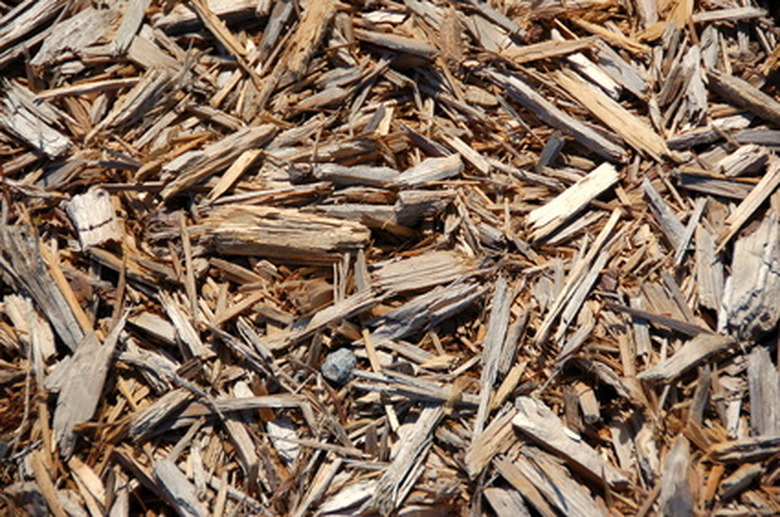Cypress Mulch Or Pine Bark Mulch
Mulching is not only a good way to recycle leftover organic material, it's good for your garden too. There is a wide array of mulching products on the market; some organic and some inorganic. Organic mulching encourages the development of natural processes important to soil amendment and sustenance. Shredded wood or bark is one of the most common types of mulches and is easy to acquire in most areas. The mulch should be from healthy trees and should be as sterile as possible. It should not be mixed with other mulches or plants and it should be shredded quite small to speed decomposition.
Benefits
A good layer of organic mulch adds nutrition to the soil and retards weed growth. It retains water so irrigation does not need to be run as frequently and reduces soil erosion. Organic mulch also makes a blanket over sensitive dormant plants, keeping them warmer in winter and cooler in summer. Mulching also encourages beneficial organisms that are key to soil turnover. Mulching is also an attractive way to set off your landscape plants.
- Mulching is not only a good way to recycle leftover organic material, it's good for your garden too.
- Mulching also encourages beneficial organisms that are key to soil turnover.
Cypress Mulch
Cypress mulch has often been touted as having natural pest resistance. It is true that cypress from old-growth forests had this attribute, but modern cypress mulch is not immune to pests. Cypress mulch heartwood is more beneficial than other parts of the tree; however, the concern rises that the whole tree is being cut down for a small benefit. Cypress mulch was once just a byproduct from mills but now it is a logging industry in itself. Cypress mulch is very attractive and has a pleasant aroma.
Pine Mulch
Pine bark mulch is a timber industry byproduct that home gardeners can put to good use. From an aesthetic standpoint, the color does not fade as fast as other bark mulches. Consistent application of only pine mulch will cause surface soil to become too acidic. Additionally, needled mulches can release substances that can be toxic to herbaceous ornamentals and vegetable crops. Pine bark mulch is generally in larger pieces and can take longer to break down. It is best to use a bark mulch that is rated "small" or "medium."
- Cypress mulch has often been touted as having natural pest resistance.
- It is true that cypress from old-growth forests had this attribute, but modern cypress mulch is not immune to pests.
Method
Mulching can be done any time of the year. It should not be laid any deeper than 2 to 3 inches to avoid suffocating the anaerobic processes important to soil. Add a nitrogen-rich fertilizer to the bed before mulching as mulch decomposition draws much of the nitrogen from the soil. Spreading organic mulches can be done with a rake or it can be blown on. The rake method is time-consuming but works well if you have a small area. If you are mulching a very large area or acreage, consider having a company blow the mulch onto the beds. The mulch should be watered well after it is laid. Many companies pile bags of mulch up so they retain and accumulate heat. The excess heat is not good for your plants, so a blast of water is useful to cool the area down.
- Mulching can be done any time of the year.
- The rake method is time-consuming but works well if you have a small area.
Warnings
Trees are sensitive at the base collar and mulch should not be piled up around tree trunks. The mulch should stop a couple of inches away from the trunk so it has air and does not get moisture trapped at the base of the tree. Apply mulch in a 2-foot diameter for every inch of trunk circumference, around the tree but not directly on the root ball as this encourages roots to come to the surface rather than grow deeply like they should. Mulch should also be at least 12 inches away from buildings to discourage termites and other pests and keep the foundation from retaining moisture.
